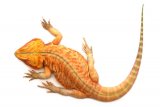
There are so many different measurements used to describe the size of an animal, used for various scientific studies. Even within the same field, different authorities use different approaches to obtain the same nominal measurement. For example, some authorities give scorpion lengths from the front of the carapace to the tip of the telson, others from the chelicerae to the vent. Some measurements can vary by country. For example, in some countries, spider sizes will normally be given by legspan, while in others the size given will normally be the body length.
Within the hobby, it is common for people to talk about the "size", "length" or "weight" of their animal, without specifying which of the measurments they are using. This can make it very difficult to compare animals. A "15 cm" lizard from one supplier could actually be longer than a "20 cm" lizard from another, just because one quoted the snout to vent length, while the other quoted the total length. (Oh, and should the "largest" snake be the longest one, or the heaviest one?)
There are often no formal standards for what should count as the official way to measure these animals. The measurements we use will not necessarily match the ones used by a given scientific study, but we try to use measurements that make sense to the majority of people. If there are cases where two different approaches are common, we try to give both lengths, to allow comparisons.
There are two types of weight measurements that may be listed for animals on this website.
The "empty weight" is the more important measurement. This is the weight of the animal itself, not including the weight of any food or faeces (or eggs which have just been laid). It is not always possible to get a perfect empty weight measurement, as it relies on the animal to fully excrete any faeces before weighing. The weight is measured the day before the animal is due to feed again, or after they produce their main faeces after feeding. For tortoises or other animals that eat regularly during the day, this might be the weight that is taken just after the animal has been encouraged to excrete, such as just after a bath.
The "full weight" is the weight of the animal after feeding, or before faeces have been produced. For females, this may be the calculated or measured weight just before laying eggs. Except in the case of egg laying, this measurement will not normally be taken, as it can be heavily influenced by the size of recent meals, and may therefore not be representative of the weight of the animal itself.

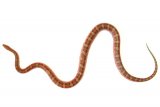
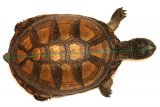
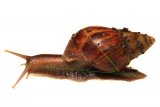
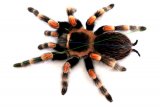
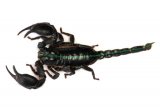
There are different types of length measurement, and each of these will be important for different types of animal.
The "length to vent", formally known as the "snout to vent length" or "SVL", is the length from the tip of the animal's nose, to the cloaca/vent/anus, with the body and head held straight. This is mostly important for lizards, frogs and newts, as this is a length that remains consistent, even if the tail is lost or damaged. For spiders, this is known as the "body length", measured from the front of the chelicerae (fangs relaxed, not extended) to the vent which is located on the tip of the abdomen, not including the length of the spinnerets. For scorpions, this is the length from the front of the chelicerae (relaxed, not extended) to the vent, which is located near the tip of the tail; the tail must be relaxed, lying flat on the floor behind the scorpion. For snakes, this measurement is not normally taken. For tortoises, turtles and snails, the shell length is measured instead.
The "total length", formally known as the "snout to tail length" or "STL" for many animals, depends on the type of animal being measured. For lizards, juvenile frogs and newts, this is the length from the tip of the nose to the tip of the tail. This can be influenced by broken or damaged tails, or tails that have been intentionally shed by the lizard (or lost by a frog during the metamorphosis into adulthood). This measurement is therefore only a guide for lizards, frogs and newts, and the length to vent is more reliable. For snakes, this is the length from the tip of the nose to the tip of the tail, measured along the spine, taking account of the way the snake has curved or coiled its body at the time when it is measured. This is the preferred measurement for snakes. For spiders, this is the maximum length from the tip of any one leg, to the tip of any other, known as the "leg span". In most cases, this is the length from the tip of an extended front leg to the tip of the extended rear leg on the opposite side. This measurement is approximate, as it relies on the spider extending them as much as possible during measuring. For scorpions, this is the length from the front of the chelicerae to the tip of the telson (sting), with the tail held flat and the telson extended so that it points away from the body. The pincers are not included as the scorpion will not reliably hold these in a useful direction for measuring. For snails, this is the length from the nose to the back of the foot. For tortoises and turtles, this is the length measured from the tip of the nose to the tail end of the shell, or the tip of the tail, whichever is further. The measurement is taken while the animal is walking forward with the head (and optionally also the tail) outstretched, and is therefore heavily influenced by how far the animal has chosen to extend its neck and tail, making it quite unreliable. The shell length is preferred.
The "shell length", formally known as the "straight carapace length" or "SCL", is the horizontal length from the front-most point of the top shell to the back-most point of the top shell, used for tortoises, turtles and snails. This is not measured around the curve of the shell, and may instead be thought of as the length of a gap that the animal's shell could fit into lengthwise, or the length of a flat ruler that would be covered by the shell. Even if the plastron (bottom shell) sticks out beyond the carapace, the plastron is not included in the measurement. For species with a hinged carapace, the carapace is assumed to be in the hinged open position, and does influence the length. For snails with depressed shells (a relatively flat spiral, rather than being obviously pointed, so that the spiral is wider than the length to the tip of the shell), the maximum diameter across the shell's spiral is used instead.